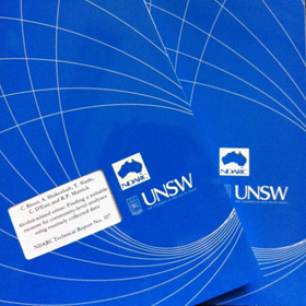NDARC Technical Report No. 79 (1999)
EXECUTIVE SUMMARY
Recent Australian research has documented the emergence of smoking as a relatively common route of heroin administration in south-west Sydney. However, transitions to injecting are also common, often occurring within the space of a few months. This contrasts with the situation in parts of Europe and the UK, where heroin smoking has been a stable pattern of use among some heroin users since the late 1980s.
The bioavailability of heroin is determined by a number of factors, including form/composition, route of administration, the presence of adulterants and impurities, and chasing/injecting techniques. If, as existing data suggest, the heroin sold in Cabramatta (and by extension the rest of Sydney) is predominantly heroin hydrochloride (salt) rather than base, it may not be pharmacologically suitable for chasing. This study therefore aimed to provide baseline data on the pharmacological properties of heroin available for sale in Cabramatta during the six-month period from October 1996 to March 31, 1997.
A retrospective sampling frame was generated comprising all police seizures (“exhibits”) suspected of containing heroin logged in the exhibit books at Cabramatta Police Station in the six months October 1, 1996 to March 31, 1997 (n=487). A total of 33 street-level “exhibits”, comprising 88 samples (e.g., multiple balloons and foils), were obtained from the NSW Police Service for these analyses.
All of the 88 samples analysed contained heroin as the hydrochloride salt. No heroin free base was encountered. The mean purity of the 88 heroin samples was 66.2 %. Fifteen percent of exhibits and samples were of very high purity (91-100 %), while none were less than 20 % pure. While the purity of these samples was significantly higher (at sample level) than the purity of the Cabramatta heroin analysed earlier by Weatherburn and Lind (1997), there was no linear trend in purity across the study period.
These analyses indicate that street-level heroin in Cabramatta was relatively free of harmful adulterants. Those detected were pharmacologically inactive diluents largely used to add bulk (sugars), or pharmacologically active adulterants used to improve the bioavailability of heroin HCL when smoked (caffeine). The reasons for the addition of paracetamol require clarification.
This study did not find evidence to support one pre-requisite for the development of a heroin smoking culture - the availability of heroin in a form that could be easily and efficiently smoked. No heroin free base was encountered. The adulterants and diluents present in these samples were similar to those commonly found in the UK and Europe, and to a lesser extent, the US. Given the ability of caffeine to increase the recovery rate of smoked heroin hydrochloride, its addition in one third of these samples may be an attempt to increase its volatility and hence facilitate heroin smoking. The reason for the addition of paracetamol requires clarification, as its impact on volatility is uncertain.
The street-level samples analysed for this study had an average purity of 66%, with 85% having an average purity of at least 50% heroin hydrochloride salts. This is in the range reported for small NSW seizures (<2g) by the Australian Federal Police in 1997-1998 (64% to 71%). These findings have several implications for the risk of fatal overdose.
These results also suggest that while there may be a demand for harm-reduction interventions designed to facilitate transitions from heroin injecting to smoking, careful consideration of the pharmacological factors associated with route of administration is required.


